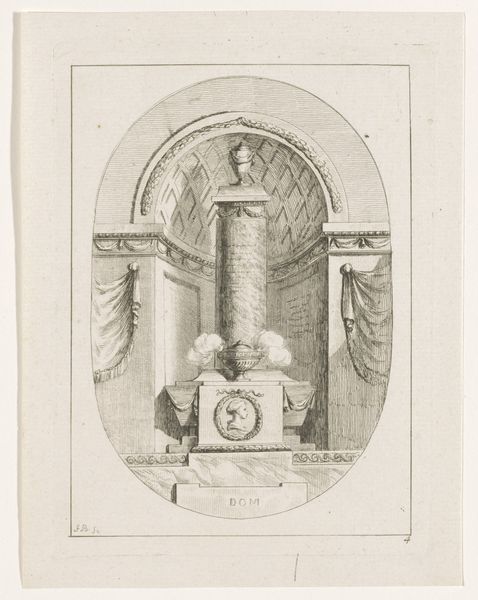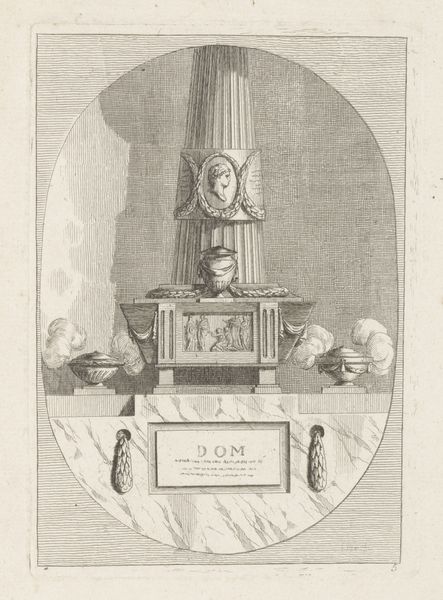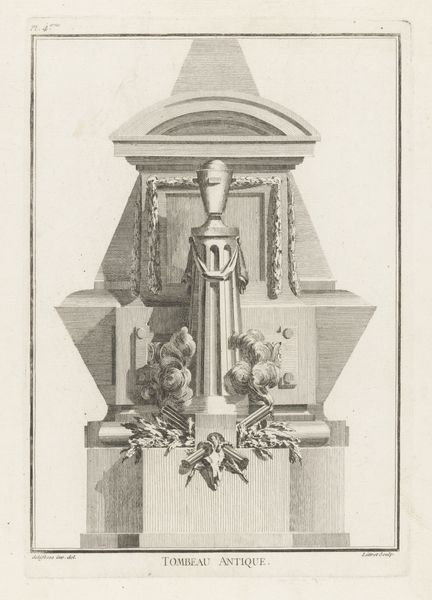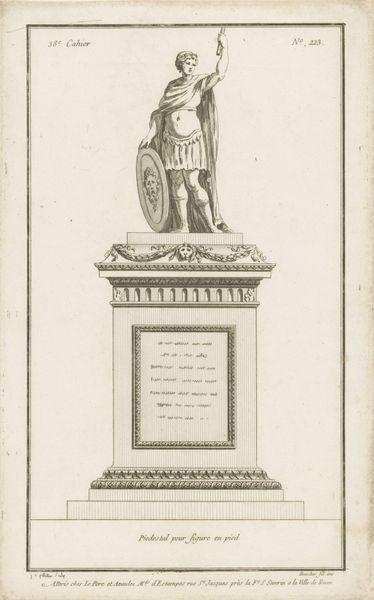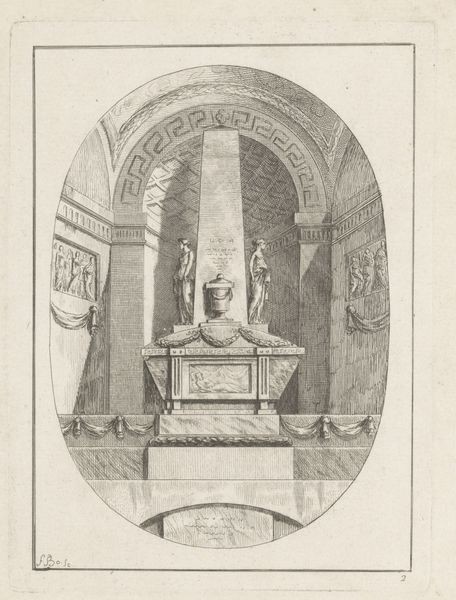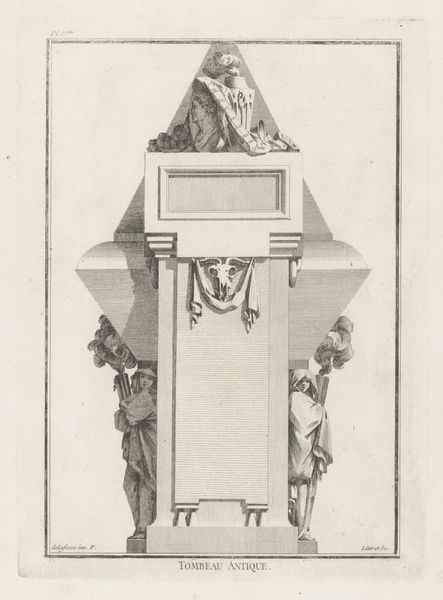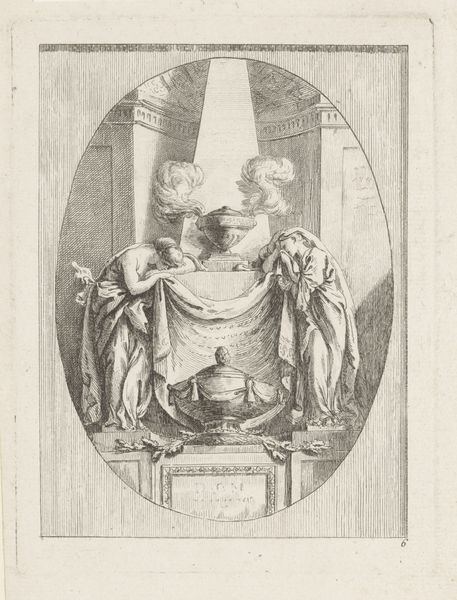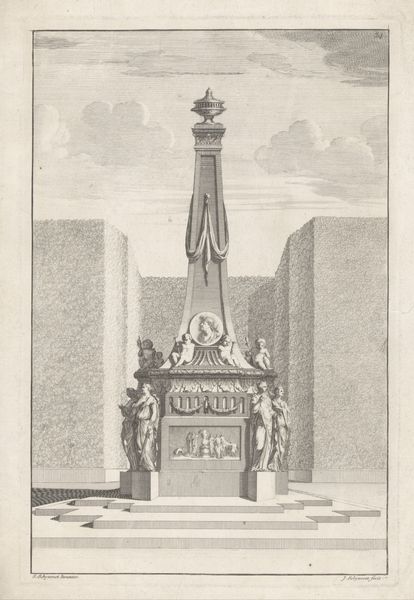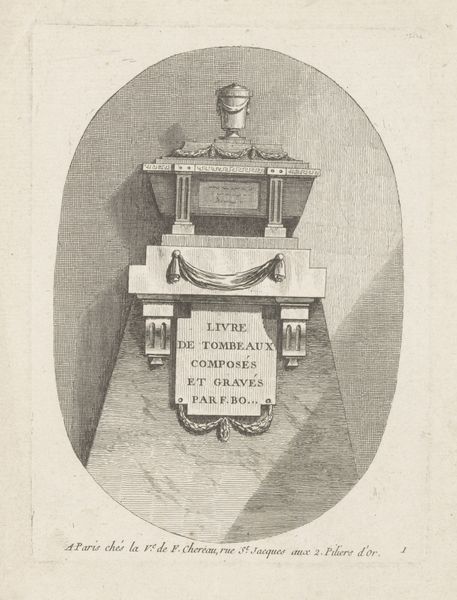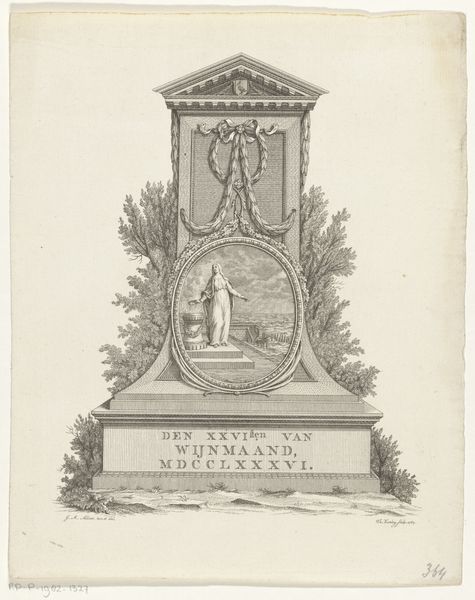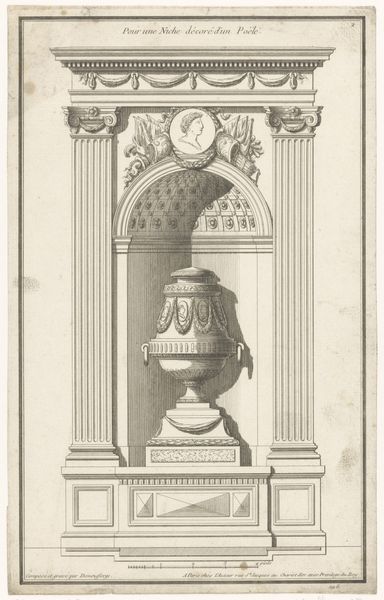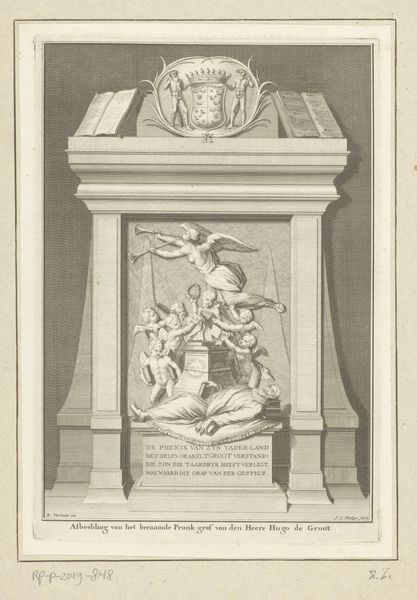
drawing, print, paper, ink, engraving
#
portrait
#
drawing
#
neoclacissism
#
allegory
# print
#
landscape
#
classical-realism
#
figuration
#
paper
#
form
#
ink
#
classicism
#
line
#
cityscape
#
history-painting
#
engraving
Dimensions: height 168 mm, width 121 mm
Copyright: Rijks Museum: Open Domain
Curator: The Rijksmuseum holds a drawing from between 1755 and 1782 by Juste Nathan Boucher titled “Nistombe met zuil,” rendered in ink and engraving on paper. It presents an allegorical scene framed within an oval, displaying classical realism characteristic of the Neoclassical movement. What's your initial impression? Editor: Melancholy. Immediately, I sense a subdued reverence. The muted tones enhance the somber mood; it feels like walking through a graveyard on a cloudy day, you know, finding beauty in the quiet solitude. Curator: That reading aligns with the thematic elements, it really does, particularly the representation of form and the evocation of history. Focusing on structure, the verticality of the pillar, inscribed “DOM,” grounds the composition. We observe two draped female figures flanking this pillar—their postures, their contrapposto, certainly command a strong sense of balance, no? Editor: Absolutely. And they bring a narrative dimension, don’t they? Their downward gaze pulls me in. Who or what are they mourning? The details here are stunning—see how Boucher captured the way fabric falls and folds. Also, there is a stillness to them, they feel lost in memory and quiet reflection. The pillar itself, feels oddly monumental for a simple engraving, it anchors these feelings, as it speaks of some lasting absence. Curator: Precisely, it introduces us to the engraving’s deeper meanings. Note the allegorical details above the pillar: the urn and wreath, common symbols in memorial art. The whole scene is enveloped in marble. Editor: So it’s a tomb, a place of final rest? It’s hard to feel any sort of triumphant note usually associated with neoclassicism. Even for a memorial image, it’s decidedly lacking a bright vista, it seems, the lines are so softly realized... It reads more as a place of sorrow, of deep thought. I imagine poetry carved into the stone! Curator: And this sense you get really reveals the success of Boucher's formal approach, through careful use of line, shading, and classical elements to evoke, specifically, sentiments of memory and loss within this artistic idiom. It’s truly remarkable! Editor: You've made me look more intently—thank you! There’s much more depth and deliberate construction that I had seen initially. I still think it is melancholy!
Comments
No comments
Be the first to comment and join the conversation on the ultimate creative platform.
